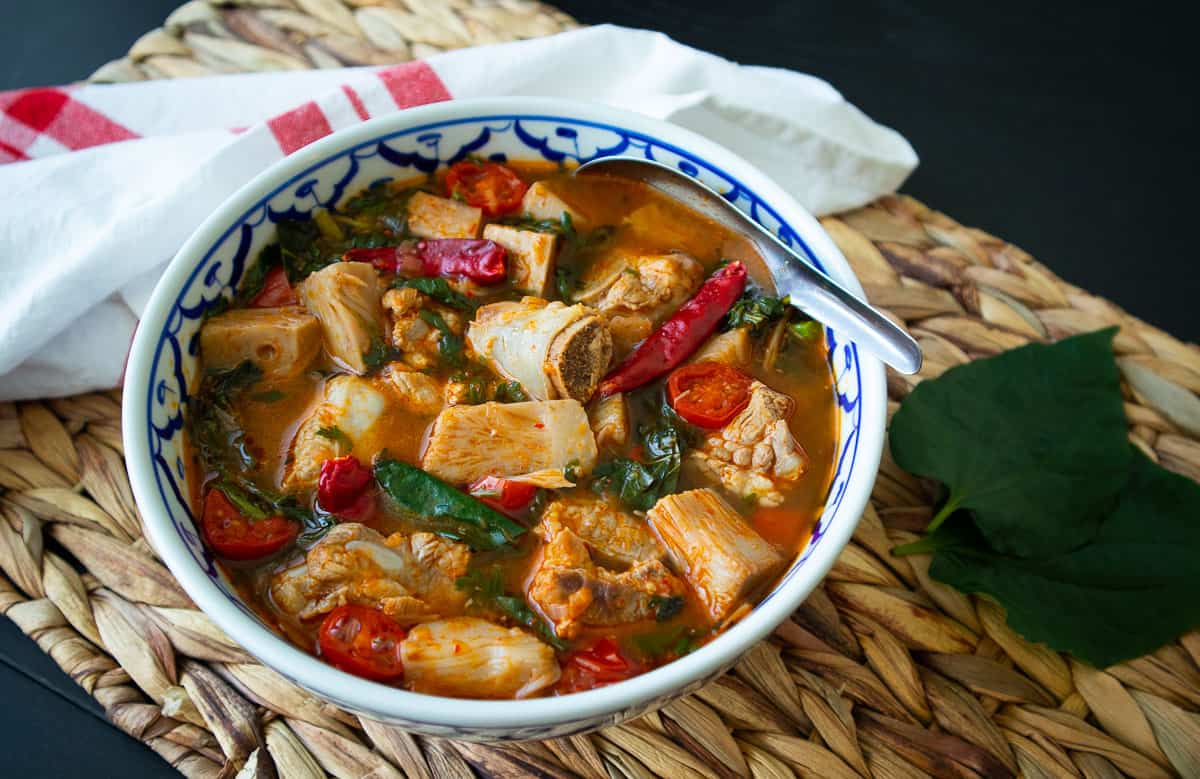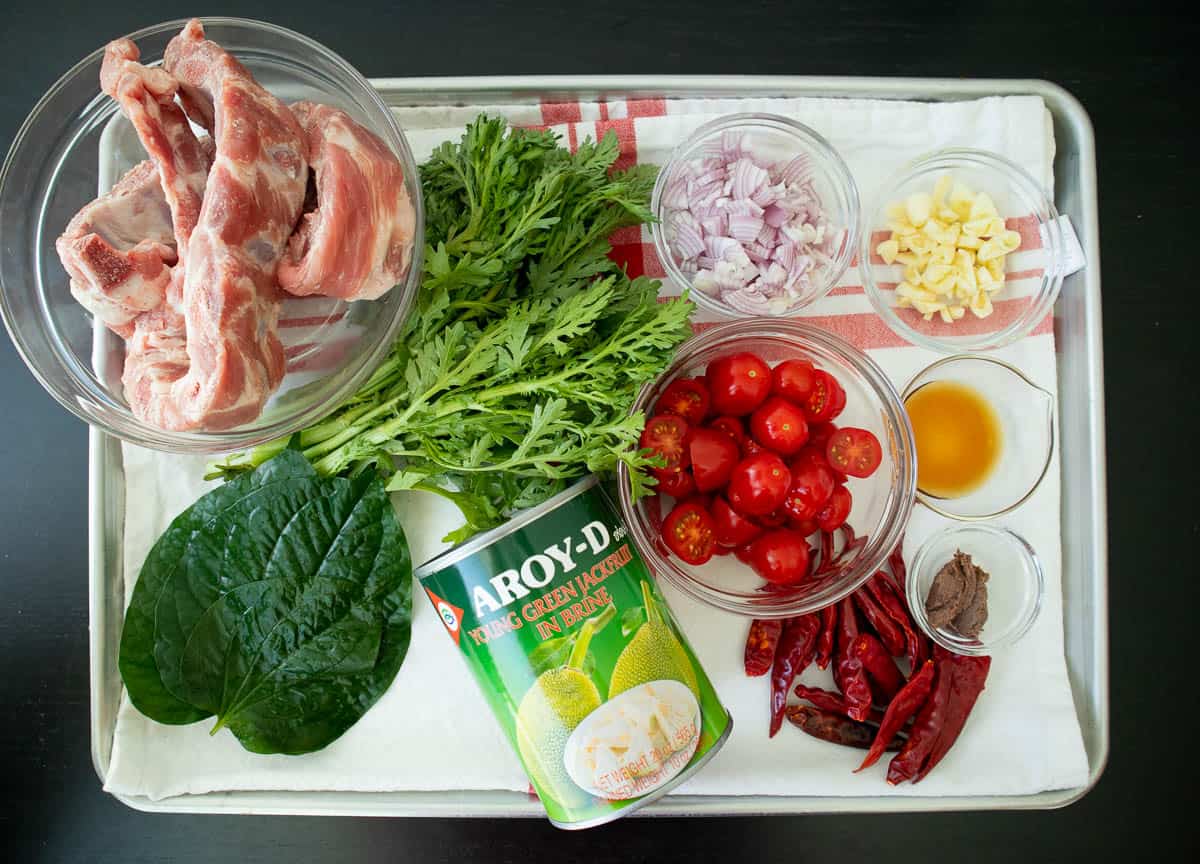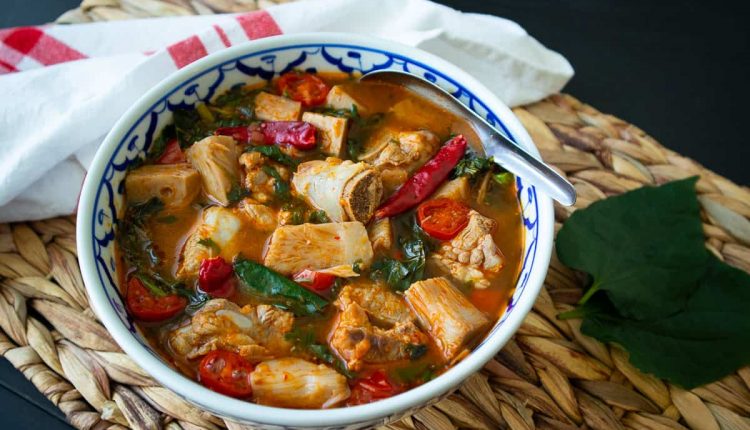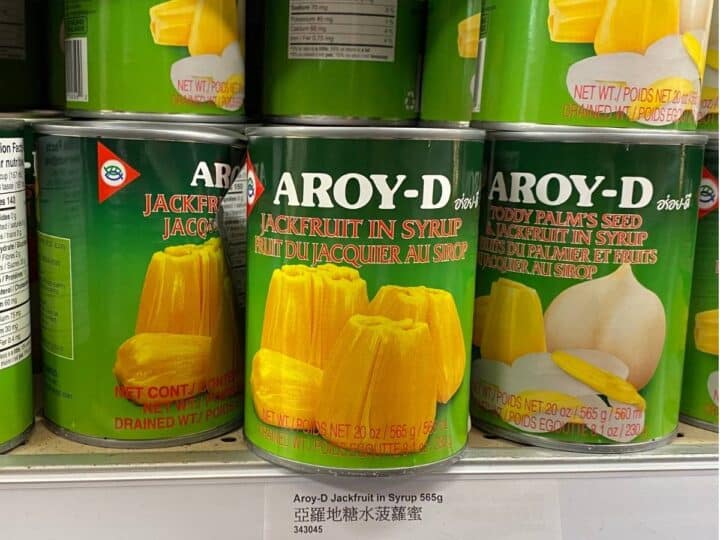©2021 Reporters Post24. All Rights Reserved.
Young jackfruit is having a bit of a moment in the West because it has been adopted as a vegan meat substitute; making it more widely available even at non-Asian stores. In Thailand, young jackfruit has always been used as a vegetable, and this curry is one of the easiest introductions to working with young jackfruit.
This dish belongs to the family of Thai water-based curries, like sour curry and jungle curry, so no coconut milk here. The ribs enrich the broth, the tomatoes provide natural sweetness, and the jackfruit gives a unique texture. It’s really different from any other Thai dish you might have had in restaurants, and worth exploring if you love trying new things!

What You’ll Need
Here are the ingredients for jackfruit curry. Yes, you will need to make the curry paste yourself because it’s so simple they don’t bother selling it pre-made!

Step-By-Step: How to Make Jackfruit Curry
To ensure success be sure to check out the detailed instructions and full video tutorial in the recipe card below – but here’s a bird’s eye view of what you’ll need to do.



Young Green Jackfruit vs Ripe Yellow Jackfruit
Jackfruit is a tropical tree fruit with blunt, short spikes and can range from large to jaw-dropping enormous!
When the fruit is young, the exterior is green and the flesh is white with a relatively mild flavour. The seeds have not yet become hard so you can cut up the whole fruit and eat everything but the skin. You can find canned young jackfruit packed in brine at most Asian markets.
Once jackfruit is mature and ripe, the flesh becomes bright yellow with a hard brown seed inside each “piece”. It also develops a strong aroma and becomes very sweet and super delicious! You might have seen it before in Southeast Asian desserts such as Filipino halo halo or Thai lod chong Singapore. You can buy ripe jackfruit in cans, packed in syrup.
Needless to say, green and yellow jackfruit are vastly different and are not interchangeable in any situation!
How to Cut Open a Fresh Jackfruit
If you’re working with fresh young green jackfruit, it’s simple because the whole thing is edible except the skin. So slice off the skin and chop the interior up into small pieces. Some people (like me!) don’t like to eat the firmer core, but to not be wasteful I’d use everything. Tip: Oil your knife so the sticky sap doesn’t stick to it as much.
But if you have a ripe jackfruit, cutting it open can be a pain and requires some knowledge of jackfruit anatomy so you know which part is edible and which part is not. Here’s a video I filmed years ago in Thailand showing you how to cut up a jackfruit from our tree!
FAQs About Ingredients in Jackfruit Curry
I don’t eat pork, what can I use instead?
You can use chicken wings. You want lots of bones which are what will make the broth delicious. If you’re going to go with boneless meat then you MUST use a good, strong stock instead of water.
What can I use instead of shrimp paste?
You can use 1-2 tablespoons of miso paste or Korean doenjang. The flavours are quite different but at least you will still get the that rich umami which is important. If you want to know more about shrimp paste, check out this video for shrimp paste dip.
What can I substitute for young jackfruit?
Nothing! J/k. Well, not really…it IS jackfruit curry after all. I can’t think of any other vegetables that would be similar to jackfruit in terms of texture or flavour, so I’d go with whatever non-leafy veggie you like (green papaya, winter melon or zucchini would be good) and adjust cooking time accordingly.
What can I substitute for wild betel leaves and cha-om?
Sturdy leafy greens such as Chinese broccoli or Swiss chard could work instead of wild betel leaves. Instead of cha-om you can try chrysanthemum greens, asparagus, or any other non-neutral flavoured greens you like.
What kind of dried chilies should I use for Thai curry paste?
You have many options depending on how spicy you want it. If you want mild, go with large dried chilies such as guajillo, puya, or the original Thai spur chilies if you can find them. You can even use Korean red pepper flakes (gochugaru).
For a spicy curry, use small ones like Thai chilies, arbol, or the unnamed dried chilies you can find at most Asian grocery stores (which is what I used in this video). Feel free to add more than the recipe calls for; there is no maximum!
What you might want to do is to combine them to get a customized level of heat: some large ones for flavour and colour, and some small ones for heat. If you can only get spicy ones, you can remove the seeds and/or pith to lessen the heat.
Source: hot-thai-kitchen.com





